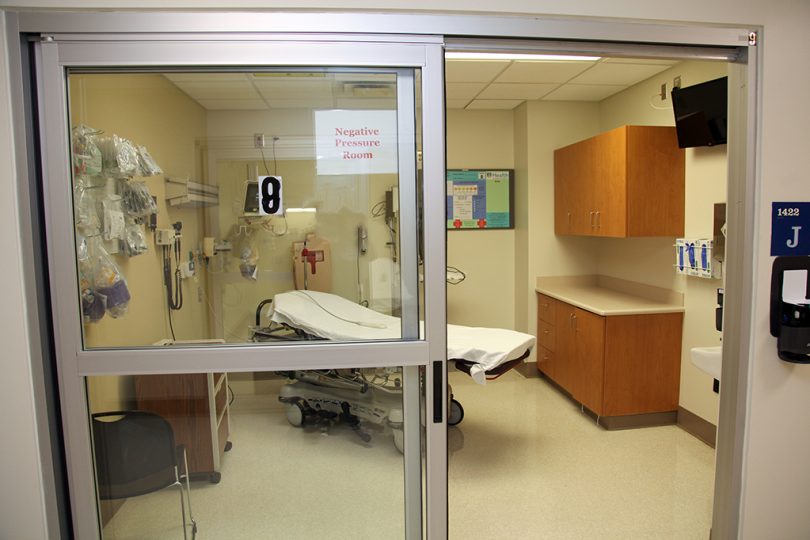What started as an idea to address bed holds in Augusta University Health has transformed into an innovative way to treat critically ill patients needing ICU care in the hospital’s Emergency Department.
The hospital’s new Emergency Critical Care Center (EC3), also known as the ED-ICU, consists of seven beds in five rooms that provide ICU level care to patients in the emergency department who are waiting on a bed in the ICU. These patients are projected to need the ICU for less than 48 hours. The mission of the new ED-ICU is to care for critically-ill patients who are considered “short stay,” freeing beds in the hospital’s ICUs for patients who need longer-term intensive care.
Dr. Max Bursey, Clinical Service Chief for Critical Care in the Department of Emergency Medicine, says what makes this unique to AU Health is inpatient emergency critical care is a new field of medicine, providing a huge boost to patient safety and workflow.
“The intent is to provide the same high-level advanced critical care capacity as our upstairs ICUs,” said Bursey. “It frees up those beds, and also frees up the rest of our emergency department to keep doing what they need to do with the next patient coming in.”
Bursey believes this new process can shave eight to 12 hours off an ICU length of stay.
“Every bed we can keep free upstairs is a bed that can be used for the sicker patients, the ones who really need to be in an ICU,” said Bursey. “It helps decongest the ICU it helps decrease patient ICU length of stay, and helps close the gap for patients who may fall through the cracks.”
The area is staffed around the clock by a dedicated attending physician, an Emergency Medicine resident, and up to four nurses. This required a new form of training for emergency department staff, and emergency doctors who are not accustomed to longer ICU care. Bursey and other doctors trained on staff are working around that by teaching current emergency medicine nurses and residents.
“We’ve navigated that national staffing issue by bringing people in and training them on the job. There’s critical care oversight and medical direction, chart reviews, and it means we can get some of the folks to the point where they can do this type of critical care without having to have done a two- to three-year fellowship,” said Bursey.
The EC3 also serves as an overflow area for the emergency department. If rooms are full and a patient comes in, they would be able to be treated in the same way as the other rooms.
“It’s really beneficial to our patients because it gives us that much more space, and another place for that patient to be able to go,” said Bursey.
Plans to expand are also in the works. Right next to the ED-ICU is a converted open bay area with 13 beds. The area used to be the home of the Blood Bank, but has been cleaned up and remodeled to hold patients. Each bed has curtains separating patients, and work has already been done to install medical gas pipelines to each bed, and they’re looking into installing central monitors, building walls, and getting the area suited for patient care.
Bursey says converting these beds into sectioned off ICU pods would grow the total number of beds in the EC3 to 20, which would drastically improve patient care and get the patient home sooner.
”It’s better for the patient and better for the system, so there is room to grow. It’s all exciting,” said Bursey.


